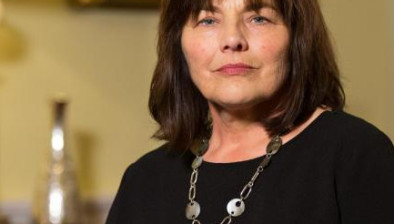Rise in self-harm amongst detained young people

There has been a rise in self-harm amongst detained young people over the last five years, according to a new report.
The Mental Welfare Commission for Scotland’s report analysing the detentions of young people aged 16 and 17 for mental health care and treatment in Scotland and found self-harm to be a key characteristic, particularly with young women.
The new report analysed all detention forms for 16 and 17-year-olds in Scotland over a five year period from 2014-15 to 2018-19. This amounted to 608 detentions under the Mental Health Act over the five years, relating to 402 young people.
There are two ways detentions can take place. Most of the young people (421) were detained using short term detention certificates, which last up to 28 days and are the usual route into hospital care under the law as there are more safeguards. Emergency detention certificates, which allow for a person to be held in hospital for up to 72 hours while their condition is assessed, were used in 187 cases.
Numbers of 16 and 17-year-olds being detained in Scotland have risen from 106 in 2014-15, to 173 in 2018-19 – the five year period covered by the report.
Information reviewed included the reason for the detention and any other underlying mental health conditions noted on the detention forms. Key findings are:
- Over the five-year period, 60 per cent of detained patients displayed self-harming behaviours (suicidality or deliberate self-harm). This was higher in those detained on emergency detention certificates (EDCs) compared to short term detention certificates (STDCs) (74 per cent and 53 per cent, respectively).
- There has been a rise in the proportion of detentions in which self-harming behaviour is reported over the last five years.
There has been an increase in detentions in which self-harming behaviour was reported in girls, whilst detentions reporting self-harming in boys decreased. - Most (81 per cent) of the emergency detentions occurred during out-of-hours (weekends and 5pm-9am on weekdays) and 38 per cent of STDCs occurred out-of- hours.
- Only 51 per cent of emergency detentions had consent of a mental health officer (MHO).
Most detentions related to concerns about the patient’s own safety, though boys more often presented as a risk to themselves and to other people compared to girls. - Psychotic symptoms/disorder was the most common presentation in all detentions (40 per cent), with a higher proportion among boys than girls (54 per cent and 32 per cent, respectively).
- Mood disorder/difficulties was described in 35 per cent of patients, with an equal distribution in boys and girls (35 per cent and 35 per cent, respectively).
- Substance use (confirmed or suspected) was indicated in seven percent of detentions, higher among boys than girls (12 per cent and four per cent, respectively).
Dr Arun Chopra, medical director of the Mental Welfare Commission, said: “Mental illness in young people can be short term, or can be the start of a prolonged period of difficulty. It can disrupt education, the development of friendships and the transition into adulthood, significantly affecting both the young person and their family or carers. Getting the right help early can make a major difference.
“We conducted this analysis because we knew that detentions of young people were rising, and we wanted to understand better the characteristics and presentations of young people who are so unwell that they need treated under the law. Our analysis does not attempt to say why the detentions are increasing, but it does give information on these two key issues.
“We now aim to share these findings and hope they might be a helpful contribution for young people, those important to them and the services and clinicians working with them, in considering who might be supported by developing intensive treatment services in the community and alternatives to hospital admissions.
“I am really glad to say we have a meeting later this month with clinical leads where this report, and the experience of family and carers, will be discussed.”









